This piece was provided by CODO Design, a food and beverage branding firm, and authors of Craft Beer, Rebranded. This book (and companion workbook) is a step-by-step guide to help you map out a successful strategy for rebranding your brewery. Join 5,000+ other brewing industry folks on the Beer Branding Trends newsletter to receive monthly field notes covering trends, currents and actionable advice from the front lines of beer branding.
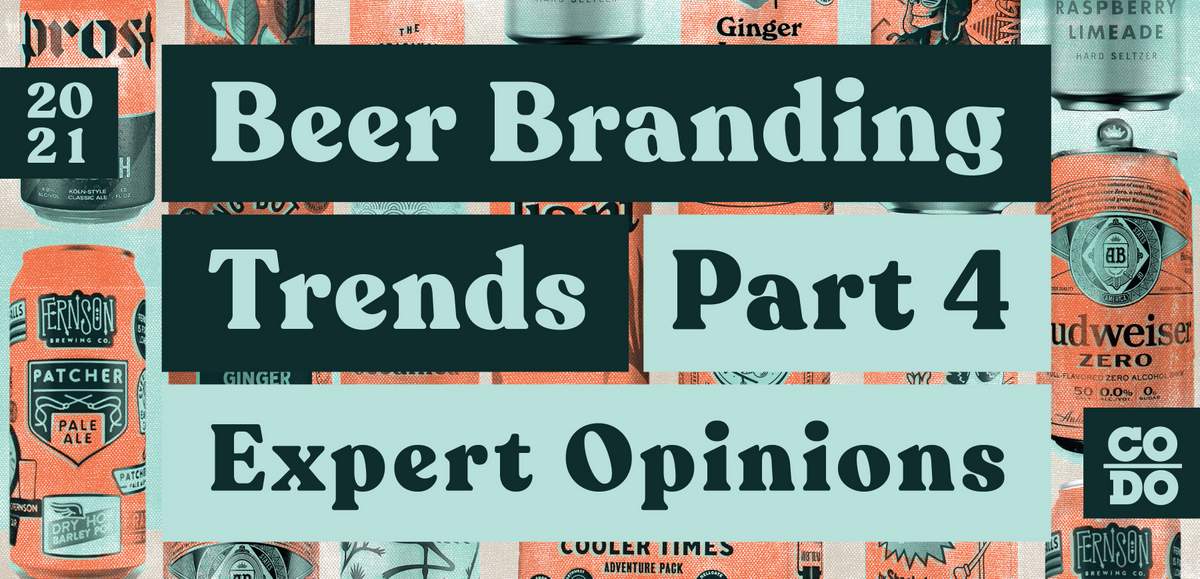
This year, we’re fortunate to be joined by eighteen industry experts spanning brewery founders, CEOs, distributors, marketing directors, leading industry consultants, writers, strategists and economists. We’ve given each person a few specific questions to add more context to everything we’ve discussed to this point.
Let’s meet our experts (in alphabetical order).
- Jen Adams (Tröegs Independent Brewing)
- Jeff Alworth (Beervana)
- David Bower (Upland Brewing)
- Rob Day (Jack’s Abbey Craft Lagers)
- Michael Graham (Austin Beerworks )
- Keith Gribbins (Craft Brewing Business)
- Zeb Harrington (KettleHouse Brewing)
- Julia Herz (Herz Muses)
- John Holl (Drink Beer, Think Beer)
- Joel Hueston (First Key Consulting)
- Emily Hutto (RadCraft)
- Justin Kendall (Brewbound)
- Mandie Murphy (Left Field Brewery)
- Julie Rhodes (Not Your Hobby Marketing)
- Paige Sopcic (CanSource)
- Bart Watson (Brewers Association)
- Bump Williams (The BWC Company)
- Taylor Williams (Craftroads Beverage)
***
Jen Adams, Vice President of Marketing, Tröegs Independent Brewing
CODO: Is Tröegs thinking about reevaluating its positioning and messaging once we’re beyond the pandemic or are you focused more on the immediate day-to-day work right now? Are you able to look ahead through all this?
Jen: We’re definitely looking ahead, but I wouldn’t necessarily say that we think we’ll need to re-evaluate our messaging or positioning once we’re “beyond COVID-19”. We are who we are, and that has framed how we’ve reacted to this strange and scary time. And that, I believe, will continue to frame our approach to messaging.
I always say that as a marketer, you need to be able to operate in the past, present and future. You need to react to what’s in front of you while simultaneously planning for what’s ahead, and also analyzing and reflecting on the past to make sure you don’t lose sight of who you are or mistakes you can avoid. So, while reacting to the day-to-day has certainly taken up more resources and energy than ever before (things like safety measures, curbside pick-up, and more emphasis on digital and larger pack-types of our most popular beers like Perpetual IPA), at Tröegs it has been therapeutic to make time for the projects that allow us to create and look ahead.
One great example of creative escape for us is our new HopCycle seasonal IPA, Joyous (just released last week). This one had been subtly in the works prior to the pandemic. The muse for the beer was actually not hops but a yeast strain — Hothead Kviek. Our brewing team was excited by the tropical aromas they were getting from the yeast and set out to amplify that with hop combinations.
Once the brewers had a vision for the beer around May 2020, the marketing team began developing the name and the design. We landed on the name Joyous — we thought, “Hell yeah, we hope to be more Joyous next spring!” We liked the vibe of emotive happiness that comes with discovering a new technique, the perfect flavor, the changing of the season. Designer Lindsey Tweed was inspired by the flavor notes of the beer, and her brain went to travel and hand-painted signs she’d see along the road in the tropics. We landed on a bright, citrusy color palette — not typical of the green palette we normally veer towards with hop-forward beers.
At the end of the day, we’re just trying to navigate as best and safely as we can from our tiny corner of the beer world. Parts of that world — our bar and restaurant friends in particular — have been hit hard, so we fully appreciate how lucky we are. The channels are in flux, but people are still prioritizing and enjoying beer.
Everything is just so much more raw and human right now, and I don’t think that’s going away. I’m not sure there is going to be a “beyond COVID-19” as much as a “COVID-19 evolution.”
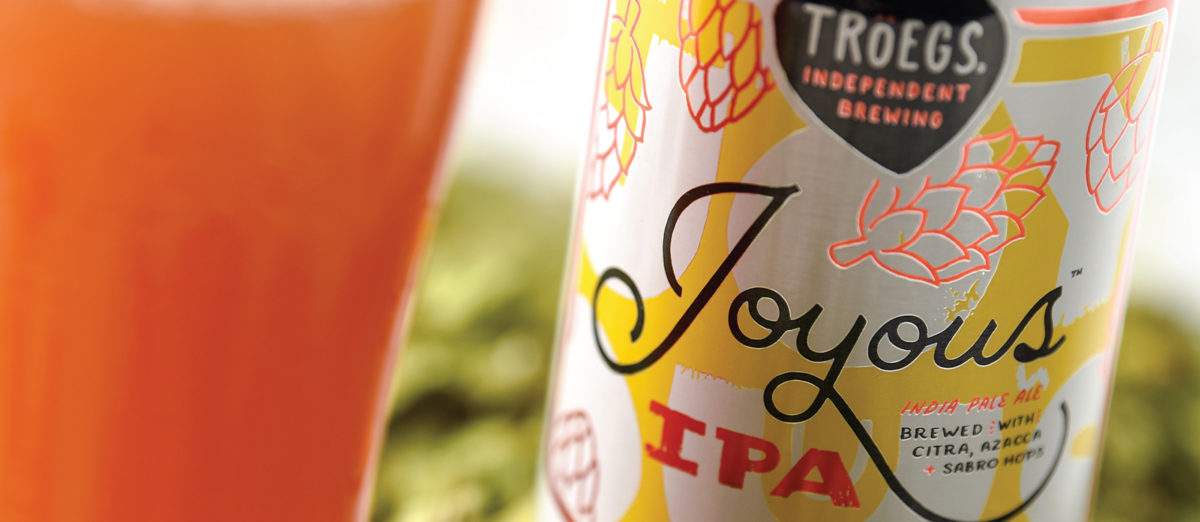
Jeff Alworth, Author, Beervana
CODO: Can you give us a lay of the land? Where are we right now as an industry as we (hopefully) head into the homestretch of COVID-19?
Jeff: The pandemic turned out to be far more severe than anyone could have imagined a year ago, yet amazingly, breweries have weathered this incredibly bad period very well. We’ve all been poring over national sales figures to see how habits have changed during the pandemic, but for me the big takeaway was what I witnessed firsthand. While larger breweries were able to survive thanks to increased packaged sales, small breweries leaned into relationships. They told their customers they needed their support, preferably in the form of direct purchases — and customers responded. It’s evidence the power of that direct connection local breweries have established with their customers.
CODO: Is there a silver lining to all the craziness we’ve experienced over the last year and a half? Are there any positives for craft beer?
Jeff: Because most breweries will survive the pandemic, the aftermath will be full of lessons. Key insights already emerging include:
- Breweries have been forced to focus, leaning into their core identities and abandoning ever-spiraling side projects. This is visible not just in product lines, but branding and marketing decisions.
- Market access has been a growing issue, especially as the wholesale tier consolidates. COVID-19 prompted breweries to pursue different direct-to-consumer approaches, and those will become more common. Home delivery is likely to outlive the pandemic. Breweries will open more satellite pubs.
- COVID-19 has revealed how central the social aspect has been to craft beer: pub-going, fests, bottle-shares, travel, and the chatter that emerges from shared experiences. (As a writer, I’ve noticed how sharply discussion dropped once people no longer had things to gab about.) Humans are social and beer is a social lubricant, and I expect people to soak in each others’ company once they’re allowed to again.
- Breweries have been generalists, offering hoppy ales, lagers, sour ales, and specialty lines of strong and barrel-aged beers. The pandemic has revealed which of these are central to a brewery’s purpose. Craft brewing had entered a baroque phase when COVID-19 hit–I expect breweries to focus more on key sellers and refine their identities.
It’s a harder year than usual to predict where things are headed, but the one thing I expect is the return of joy. Beer is supposed to be fun, and people are aching to get back to its simple, easy pleasures.
Craft Brewing Business won an investigative reporting award for its story on the New Belgium Brewing acquisition by Kirin. Read it here!
David Bower, President, Upland Brewing
CODO: Upland recently released its first hard seltzer, Naked Barrel, a differentiated seltzer that aligns with some other cool stuff Upland is known for. Which came first: the idea for this specific seltzer, or the idea that you needed to release a seltzer (and then you worked backward to differentiate from there)?
David: The direction for a wood-aged blended, real-fruit seltzer preceded a full commitment to bringing a new seltzer to market. I originally kicked around the idea of what I was then calling a “sour spritzer” in late 2019. I was working on an answer for the question of ‘how can we bring something unique & authentic to an intrinsically commoditized space?’ It’s kind of fascinating how narrowly defined the space continues to be. This focus on iteration vs innovation left a huge gap in the market to bring something entirely new to the table. The on-going puzzle, I believe, is determining how far you can push these seemingly impliable stylistic boundaries while still remaining recognizable and approachable within the category.
I also took an experimental approach to the Naked Barrel branding process. I didn’t want to simply make the Upland Hard Seltzer, I wanted to create a completely new brand identity with a completely different customer in mind. All working from the same brief: Production, Marketing, and Sales were all asked to contribute a recipe, a brand, and a strategy respectively, but were asked to create those components in relative isolation. My working theory being that the comfort of our conventional collaboration process would result in something too predictable. I wanted to create something adjacent to planet Upland, but with its own unique and self-sustaining ecosystem.
CODO: Is there room for breweries to not produce a hard seltzer (or any other non-beer beverage that people want) right now, or has the pandemic forced everyone’s hand to produce whatever they can to remain viable?
David: I believe there is absolutely room for breweries to be viable without creating a hard seltzer. The size of the hard seltzer category does not equate to the ease in which one can find success within it. The hard seltzer space is as embattled as the rest, and you have to be dedicated to long-term, perseverant brand building efforts to be a contender. It’s not simply a choice of turning on the seltzer money faucet. It’s the familiar slog. Like anything else, it’s critically important that you love what you do and stay true to your passions. Hard seltzer or not, it’s a big, beautiful world out there with plenty of room and appetite for interesting, new ideas.
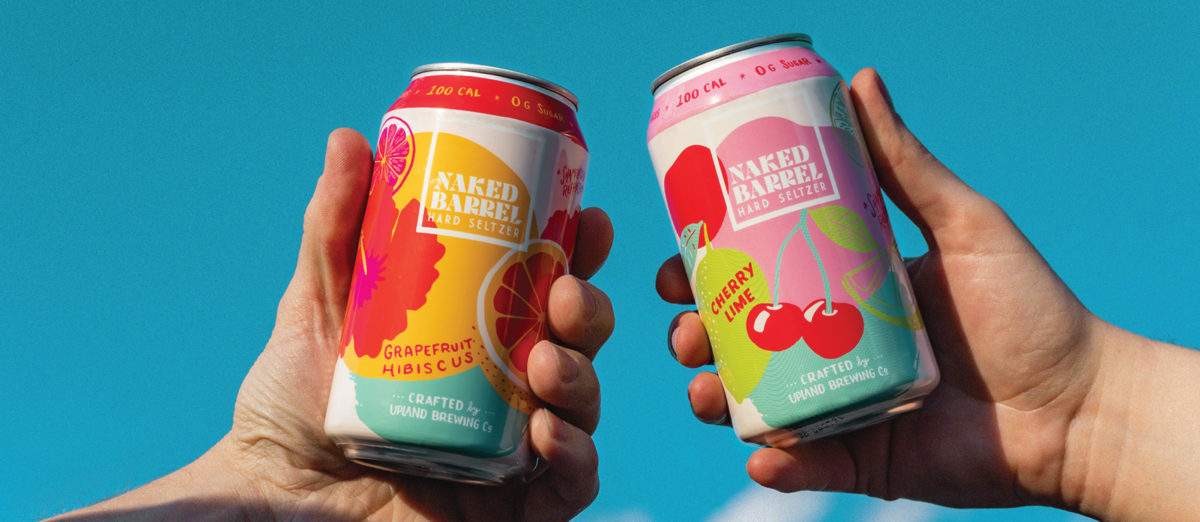
Rob Day, Sr. Director of Marketing, Jack’s Abby Craft Lagers
CODO: How did Jack’s Abby’s marketing evolve as the pandemic progressed? Any shifts in core messaging or brand voice?
Rob: To best answer this question, I need to bisect the term marketing. We’re referring to both mission/brand and tactics in one single term and I think it’s most effective to look at each discreetly.
Mission & brand: I’m proud to say that this did not change. It actually proved to be a source of strength and a valuable compass. When the world started to shake, we certainly reexamined the brand and asked some of the tough questions of whether we’re relevant in this environment. The answers were HELL and YES. Before we could think we were acting. Jack’s Abby took early steps before any mandates to separate and protect employees. We started a free lunch program when the first school closed. We spoke honestly and directly to our audience about what we were experiencing. This is who Jack’s Abby is and it’s who we needed to be at this time more than ever.
Tactics: this is the obvious place for change. I would estimate that about 40% of our plans for 2020 were experiential and another 30% were for on-premise efforts. Then beyond that — the 30% we had left intact all needed adjusting. As many did, we made a quick change to off-premise, packaged marketing which involved some new tactics — especially eCommerce and B2B marketing. Merchandising took a back seat with less staff to execute and fewer people browsing. Digital events of all kinds moved to the top of the list. Overall, a general attitude was born to try it small and fail fast or scale.
CODO: Has the pandemic forced Jack’s Abby to shelve any in-progress opportunities?
Rob: Absolutely. We had a lot of video media planned for last year that would have been unsafe to produce over this time period. We’re reworking a lot of that, but some is just scrapped indefinitely. We also had a very cool local music effort in partnership with some of our favorite venues that is waiting for that infamous “some day.” There’s a handful of other specifics, but suffice to say that everything went on ice the first week of March and it’s been a very slow thaw.
On the flip-side, we were able to push through and complete our partnership with the Boston Celtics during this same time frame. That’s a pretty remarkable accomplishment against the odds and a testament to how special it is for us.

Michael Graham, Co-founder, Austin Beerworks
CODO: You guys have been killing it on your limited release cans over the last year. It’s always fun watching the new cans hit social. Has the success of this model impacted how you view your flagship package design and/or portfolio?
Michael: Our taproom exclusive can releases were one of the main things that got us through 2020 — financially, emotionally, and creatively.
We released about 30 new cans, each with unique artwork, between March and December. They were all designed by Helms Workshop (two were actually done on a freelance basis by ex-Helms Workshop employee Alana Lyons). We considered doing a generic can that we could just change the name/style with each release, but we decided it was worth the extra design costs to give our customers weekly reasons to stay excited about our brewery. Plus, designers gotta eat, too.
The taproom cans were a really fun departure from the way our distributed beers are branded. For beers we send out into the world, we really want everything to be part of the same family and easily identifiable as Austin Beerworks. That means our primary logo is always front and center. We also prominently feature the beer’s name/style/ABV to give customers browsing the beer aisle all the information they need to make a purchasing decision. With taproom beers, none of that context is needed. The customer knows who’s beer they’re buying and our taproom staff can talk to them about every aspect of the beer. That allows for pretty unlimited freedom in how each beer is branded.
This hasn’t affected our core branding yet, but the possibility exists that if a taproom beer really takes off, we might be stuck with that existing branding if we want to scale it up for widespread distribution. But we don’t let those theoretical good problems keep us up at night.
CODO: Can a larger craft brewery thrive without releasing smaller batches of limited release beer? Can a brewery just pump out flagships and seasonals at scale in 2021 and survive?
Michael: Yes, but not forever. Larger craft brewers rely on flagship beers. The larger they are, the more they rely on them. But, what those flagships happen to be can certainly change over time, and that’s where small batches come in. I don’t know of any successful large brewery that doesn’t have a pilot system. Those small batch beers are typically taproom exclusives, and are generally a brewery’s best source of market research.
Of the ten most successful craft beers launched in the last decade, I’d almost guarantee all ten started out as a limited release. You just never know which beer will take off, or why, and it takes a lot of trial and error to find out the next big thing will be. The breweries that continue to thrive are the ones that are always testing out something new, and listening with their customers tell them they like it.
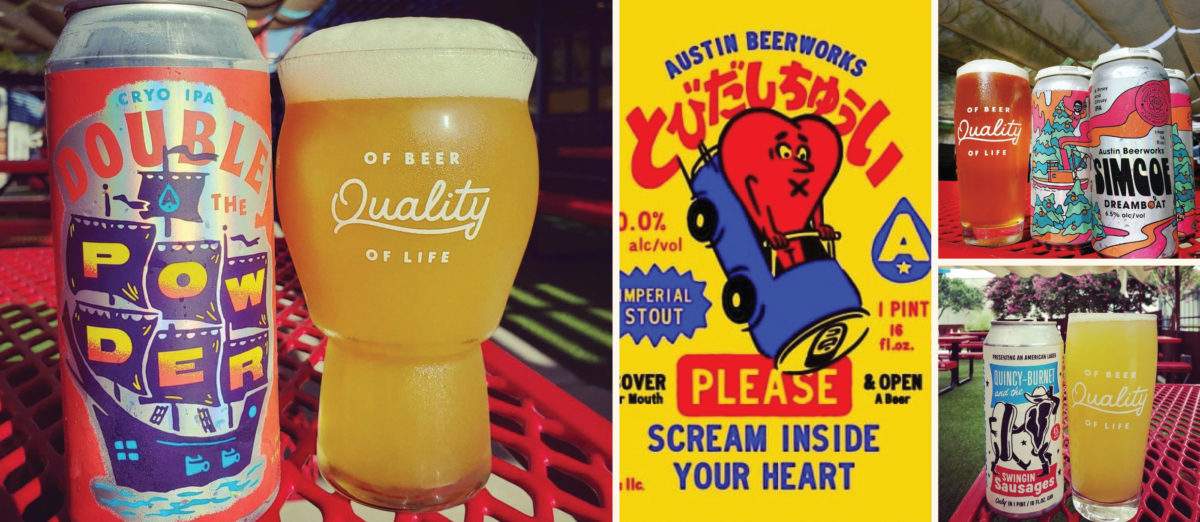
Keith Gribbins, Editor, Craft Brewing Business
CODO: Are there any positive impacts to the beer industry from the pandemic?
Keith: I’m willfully optimistic about 2021. For the sake of a momentary mental cleansing, let’s put aside the short-term fact that we’ve all seen many breweries go out of business and many beer pros left jobless during the pandemic. Let’s instead consider those beer businesses that adapt and survive to our new COVID-19 economy coming out on the other side (and I think we’re seeing the other side in the distance) that will be leaner, nimbler, cleaner, techier, diversified, better-built businesses. They will be looking at a changed landscape in the beer industry — less competition, new distribution opportunities and the important knowledge that dramatic change is only a virus away (so have a disaster plan). So, let’s see what it feels like to be positive.
The pandemic took a mallet to beer businesses in 2020 but also to the distribution model. We’re just seeing the cracks with movement on a state level via beer franchise laws and delivery and to-go alcohol beverage sales. Because of COVID-19, Massachusetts brewers and distributors were pushed to finish a 10-year effort to reform and ease constraints on terminating contracts. Alcohol delivery is getting a test run in Georgia. Ohio’s House Bill 669 opened up opportunities for qualified permit holders to sell to-go beer, wine and spirits through the end of 2022. These changes in the law are slight, but those cracks will grow, especially now that brewers and beer fans are more vested in these issues than ever before.
In fact, the pandemic is pushing all types of distribution transformation. Drive-thrus. Beer in the mail. Local delivery from a bottle shop or brewery. Unable to rely heavily on on-premise, breweries are rebuilding off-premise distributor and DTC sales models during the pandemic, which will thrive well beyond 2021. To accomplish this, breweries are investing in tech more than they ever have. POS providers are enjoying huge milestones as the craft beverage space embraces online ordering, online storefronts and mobile payment apps.
Breweries are finally committing to digital in a big way, employing savvy social media strategies, more content marketing and a bigger commitment to internet outreach. Perrin Brewing’s Interactive Brew Project allowed the brewery to stay in touch with its at-home customers by asking them to decide every aspect of its beer release schedule. Denver’s River North Brewery celebrated International Beer Day with online escape rooms. Ninkasi Brewing spent a chunk of 2020 releasing fun At-Home Sports Challenges for drinkers. These investments are digitizing brewers for the future.
On the opposite end of digital, outdoor drinking has certainly never been so grand. Outdoor on-premise laws have been relaxed. Outdoor spaces owned or leased by a brewery or located on or adjacent to brewhouses have been turned into al fresco drinkeries. Breweries are getting creative with it too. Cincy’s Fifty West Brewing opened an ice rink this winter to attract drinkers. Houston’s SpindleTap Brewery launched a ginormous new outdoor entertainment complex so folks could drink and play pandemic-safe. The infrastructure for outdoor beer drinking is being built, and it’s here to stay.
These are just a few of the positives I see for beer makers and drinkers moving into 2021. Investments in canning and a refocus on packaging have breweries reevaluating everything from brewery positioning to brand architecture. That’s good! While membership to guilds and trade associations is probably down, remaining brewery members are turning to trade orgs more than ever before for leadership and insights into running their businesses. That’s good! Experimentation is up. Equality and charity are still a heavy focus. Hey, almost everyone still loves an IPA. That’s good! The global health crisis caused by the COVID-19 pandemic has disrupted our economy in unimaginable ways, but hey, let’s not dwell. Instead, let’s move forward.
Zeb Harrington, President, KettleHouse Brewing
CODO: You released the Cooler Times Adventure Pack this year. How was that received, and do you have any plans for future variety packs?
Zeb: Historically we have bumped up against restraints with the physical capacity to produce enough beer to meet demand in our markets. Several years ago, we built a new production facility to address those issues and this allowed us to start adding some seasonal offerings to our lineup. Our company has grown primarily on the strength of our flagship beer, Cold Smoke Scotch Ale.
A side effect of being known for a highly successful beer is that outside of our home market, we were known as “The Cold Smoke Brewery” instead of KettleHouse. We have other award-winning beers that we were looking to showcase, and the variety pack was a great avenue to get those offerings in people’s hands.
Our Cooler Times Adventure Pack is an 8-pack of 16oz cans containing four varieties, and the initial release was geared toward the warmer months. It was so successful that we changed up the offerings and the carton for a winter release that is currently on the shelves. The package itself has sold well, and we feel that there is an additional benefit in creating an exposure point to develop a following with some of our other varieties.
CODO: KettleHouse was one of the earliest breweries in the country to can its beer. I imagine you’ve got quite a back stock set aside, but are you sweating the aluminum shortage? Have you had to contingency plan yet?
Zeb: We have dealt with can shortages multiple times over the past few years. The upside is that it has forced us to plan very carefully and build in contingencies.
First, we are fortunate to have built a big enough facility to store a large volume of cans on-site. Ordering well in advance has helped us to avoid some of the short-term volatility, although it does force us to hold more inventory. In the case of the varieties we order the heaviest on, we know we will use them, but the cash outlay is always a consideration.
Second, we have worked on diversifying our potential package options should the shortage impact us. This year we added an in-line labeler as well as the ability to run different can sizes through our line.
Lastly, we set up redundancy by partnering with multiple suppliers. We were fortunate this year to sign a contract with our primary supplier which should guarantee our predicted volume through 2021.

Mandie Murphy, Co-founder, Left Field Brewery
CODO: Your team tooled up a successful curbside pickup program early in the pandemic. What lessons did you learn as you set that up, and are there any pointers you can give other brewers who are looking at implementing something similar? (and do you see this lasting once we’re past COVID-19?)
Mandie: When COVID-19 first reached Toronto we closed the shop altogether out of an abundance of caution and moved to strictly home delivery. We had already established an online shop where we had been selling direct to customers and shipping across the province for years. Between that, and a nearing-idle on premise sales team, we were able to pivot really quickly to sell, route, pack and deliver beer directly to people’s front doors. Just about everyone in the brewery has or still is contributing to that program in some way and Home Deliveries now represent more than a quarter of our total sales volume.
After about a month of the Tap Room and Bottle Shop being closed, we opened a curbside shop. We didn’t actually have a pre-order / pick-up option until much more recently. Customers would just show-up, order from the beer labels that we had pinned to a cork board and we’d grab the beer from the fridge and place it on a table outside for them. We zip-tied our payment terminal to a 10-foot pole, drew some fun chalk distancing lines on the sidewalk and made the best of it. The team put our event tents to very good use to offer guests a sheltered, shaded area where they could stand to order and pay, and eventually started using them to display merch across a clothesline. We quickly eliminated the sale of single cans to improve speed of service and help minimize errors. It felt like a no-fun mix of beer festival and drive thru and was never very polished which was perhaps our way of believing it wouldn’t last for very long.
We’ve since moved indoors and limit our capacity to three masked and well sanitized guests at once. Shoppers pick their own beer from the fridge and we’re all very happy to again be offering a self-shopping environment including the triumphant return of single can sales. We offer pre-order pick-ups through our online shop and have all our beer listed on three food-delivery apps which has given us the ability to service same-day orders.
We’ve been reminded through all of this how important the tasting component is for beer shoppers. It’s one of our most precious tools (and competitive advantages) as breweries in order to enhance the shopping experience. What does the Mexican Chocolate Imperial Stout taste like? Here — try it! Engaging customers in meaningful, impactful and positive experiences in a hurried, masked, sanitized, and fearful time and from behind plexiglas is really really difficult.
Investing time and resources in automation, tech and process innovation has been positive for us and something we continue to focus on. Moving to a single provider for e-commerce and POS was something that we implemented in the fall, and it has helped us better manage inventory across two very fast paced sales channels with lots of incoming and outgoing brands. The change allowed us to offer omnichannel gift cards which is so much better for the customer and the most fun benefit is that it enabled us to launch a digital rewards program. The program works both in-store and online and allows customers to earn points on every purchase that they can redeem for merch and non-beer items. It has endless possibilities and we’re really excited to see where it takes us.
Like a lot of things with COVID-19, this experience will fundamentally change the way people behave long term and there’s no way we’re going to be able to put the toothpaste back in the tube now that beer drinkers have gotten a taste for having cold beer delivered to their doorstep by a friendly brewery rep.
CODO: What do you think some lasting changes will be once we’re beyond the pandemic? Emergent beer styles, drinking settings, format changes, etc.?
Mandie: It feels like the major resurgence of clean, crisp craft lagers pre-dates COVID-19 but that reliable and familiar taste profile might be giving us all something comforting right now, in a way. I’m personally much less likely to reach for something really out-there or unfamiliar these days and for that reason, I think core brands from a brewery need to be on-point and more reliable than ever. If you want your beer to keep being someone’s reliable go-to, it needs to be reliably excellent and reliably consistent. I think for that reason and also probably really routine buying habits, whether it be home delivery or walking to your neighborhood brewery bottle shop every Wednesday night – that we will emerge from this with more go-to beers that serve as a badge for who we are and what we believe in or how we might have experienced this traumatic time.
On the opposite side, breweries have had to adapt in a major way to get their beer out to drinkers. As a beer fan in our market, this means we have gotten access to beer from really exciting new and small breweries that we may have not otherwise had if those breweries were able to serve more of their beer in their tap rooms. Most breweries in Ontario now either ship across the province or do semi-regular deliveries to major cities with a minimum order. For that reason, there has truly never been a better time to be a craft beer drinker in our market.
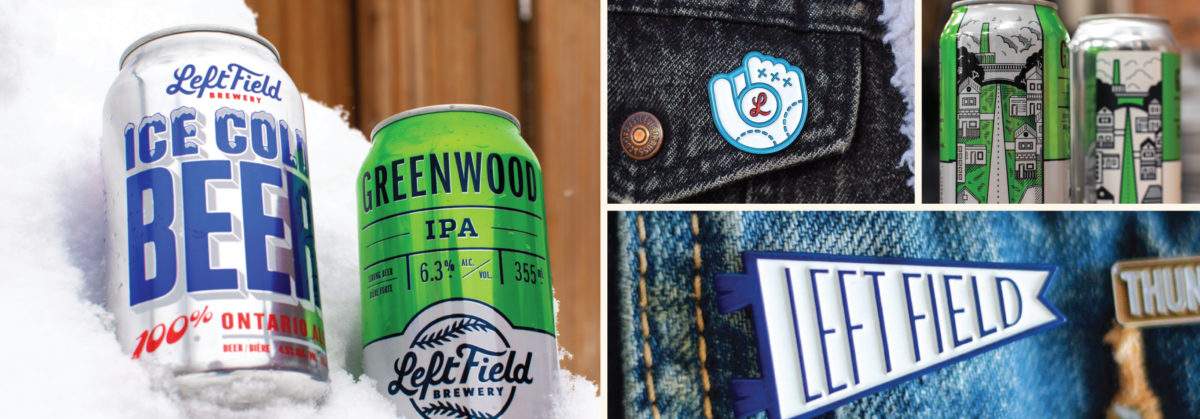
Julie Rhodes, Consultant, Not Your Hobby Marketing
CODO: We’re starting to see more folks in the industry think about Gen Z. Can you tell us why breweries need to effectively market to this group as well as some broad stroke notes on what they buy, how they enjoy beer (if they do) and what they value?
Julie: By the end of 2021, Gen Z will be in control of about $143 billion worth of spending power and will comprise about 40% of all U.S. consumers. That kind of purchasing power is nothing to ignore, and if growing craft beer brands are intentional with their sales and marketing plans, they can capture a huge segment of new beer drinkers just by understanding a little bit more about this newest customer category.
Taking a strategic approach to marketing your unique beer brand is invaluable, and an important step in the process is to really understand your ideal customer persona. Believe it or not, your beer brand is not right for everyone. The more you can isolate the specific demographics and psychographics of your ideal consumer, the better you can tailor your branded marketing messages and materials to meet them at the right place, at the right time, and in a language they understand.
If there is any beer consumer that thrives the most on brand customization and specialization, it’s the young drinkers of Generation Z, which correlates seamlessly with the world of craft beer. The wants and desires of Gen Z drinkers play right into the ethos of craft beer — defiance of large institutions, more authentic and human messaging, extreme customization, growth of community, and the desire to make real change in the world. Gen Z drinkers vote with their wallets, so if you work hard enough to grab their attention, you will be rewarded with increased revenue. It takes some work though, considering the average Gen Z consumer gives you all of eight seconds to make a lasting brand impression.
Here’s how you can leverage the spending power of Gen Z beer drinkers. Craft breweries should know what kind of beer Gen Z is purchasing and how they are enjoying it. These modern beer drinkers are very health and wellness conscious. Having unrestricted access to technology their entire lives have exposed them to massive amounts of educational content. Gen Z beer drinkers are very aware of the sugar, caloric, and alcohol content of their favorite brews. And due to the high visibility of social media, the less-than-desirable behavior of those that imbibe too heavily has led this demographic to drink in more moderation. But just because they might drink at a slower clip than other age groups, that doesn’t mean they won’t spend more than others. Gen Z might be buying less beer with lower ABV’s, but when presented with the option for more health conscious beer offerings, they are more than willing to pay premium prices for a product that is customized exclusively for their personal tastes. The only way to capitalize on this trend is to clearly communicate how your brand meets those needs, which means you need a heavy online marketing presence, as the average Gen Z’er spends about five hours per day online.
This younger crop of new drinkers also gravitate towards more traditional beer styles and tend to avoid the next “new shiny object,” like trendy seasonal flavors and varieties. When presented with a choice, of say, the newest pumpkin ale versus a traditional IPA, they will opt for the latter. Gen Z craft beer fans are also homebodies. They have adopted new at home drinking occasions that are causing them to not head out to bars as often as Millennials or Gen X. This is where tech savvy beer marketers can really flex their digital chops by providing the Gen Z audience with value-laden video content online that will entertain, educate, and engage DIY bartenders that are hanging out on their smartphones at home.
Gen Z expects brands to take a human approach to engaging and interacting with fans. This means having more intimate interactions and conversations with them on online platforms. The more you can curate your branded online community, the more likely you are to attract Z-generation drinkers. The average Gen Z beer drinker also has strict demands in terms of what they expect from brands today. In an era of “cancel culture”, brands can be squashed at a moment’s notice by social media influencers that call out their missteps, hypocrisy, and lack of core values. Gen Z wants to trust where they spend their money, so they opt for brands that embrace diversity, inclusion, issues of social justice and transparency. They want to know that your brand is more than just a business, but an entity that is committed to changing the world for good.
And finally, those craft brands that engage in omnichannel sales and marketing strategies will enjoy the spoils of attracting this new audience to their products. Your brand needs to find the balance of being readily available for purchase in multiple outlets, like retail, on-premise, and online. Plus, you’ve also got to maintain the reputation for being human, personal, and connected with each and every one of your fans. The on-demand presence of information about your brand online translates into value that Gen Z beer drinkers look for when it comes time to make a purchase.
Your next read? Maybe our Sober Up series of investigative reports. Check this out. “Sober Up: The nascent Michigan hop industry won’t survive without your help.”
Bart Watson, Chief Economist, Brewers Association
CODO: What are you seeing in craft beer sales data right now that excites you? What worries you?
Bart: The biggest worry is obviously the continued weakness in draught sales, both at the brewery and distributed draught at bars and restaurants as well as what that means for the long-term structure of on-premise. Craft is never going to have the share off-premise it does on, so a healthy on-premise is critical for most brewers. I worry that within restaurants, we’re going to see long-term shifts toward stripping out service and a move toward more fast casual, which isn’t as good a channel for beer, especially for craft.
In terms of excitement, it’s not quite the long-awaited rise of craft lager, but craft breweries are increasingly competing in the lighter, lower ABV spaces. Between lighter blond/golden ales, session sours, low-cal IPAs, and yes, lagers, we’re starting to see more craft breweries make everyday beers that move beyond the high flavor/high ABV occasions. While both have a role, the former is a bigger chunk of the overall beer category and has the potential to invite new customers into the craft category.
CODO: Imagine that COVID-19 disappears tomorrow… does the craft beer industry ever get back to growing like it was pre-2020? We were at something like 1.5 breweries opening a day for years, right?
Bart: We were at over two breweries opening a day for years and hit three a day at the peak! I don’t think we’re going to get back to that peak anytime soon, and there were signs the brewery opening number was declining pre-COVID-19, with some leading markets definitely seeing slowdowns and investors who are probably always going to be more cautious going forward than they were at the peak. That said, I think we’re still going to see numerous openings in the coming years — 1.5 a day is only 550 a year, driven by growth in underserved markets as well as churn. How many restaurants open a day in the U.S.? As concepts age and others emerge, we’re going to still see new brewery openings for a long time to come.
CODO: How has the emergence of hard seltzer affected craft beer pricing? Has the pandemic affected this as well?
Bart: I haven’t seen huge effects from seltzer or the pandemic on pricing. Pricing growth in off-premise was already slowing prior to the pandemic, and there wasn’t a huge change in trend between 2019-2020. Seltzer pricing isn’t quite as strong as craft, but it’s well above premium, and I don’t think many craft breweries are going to try and compete with White Claw or Truly on price. In addition, the boom in the off-premise has led to less discounting since most off-premise sales are up.
One area I’m watching in 2021 is on-premise pricing. There were some reports of really competitive pricing in the limited on-premise that existed this year as brewers with capacity sent beer further afield to try to keep keg volumes from completely disappearing. In addition, winning tap handles has been really hard in recent years, and I think you’re going to see plenty of people, particularly the large brewers, try and seize what they see as a unique opportunity as bars and restaurants fully re-open. Hopefully, craft brewers can still sell to bars on relationships, differentiation and margin, but I think we’re going to see some fierce competition on the on-premise side.
Read the rest of this post (all 20,000 words of it) over on CODO’s site: https://cododesign.com/2021-craft-beer-branding-trends/
Join CODO’s Beer Branding Trends newsletter for monthly field notes covering trends, currents and actionable advice from the front lines of beer branding.

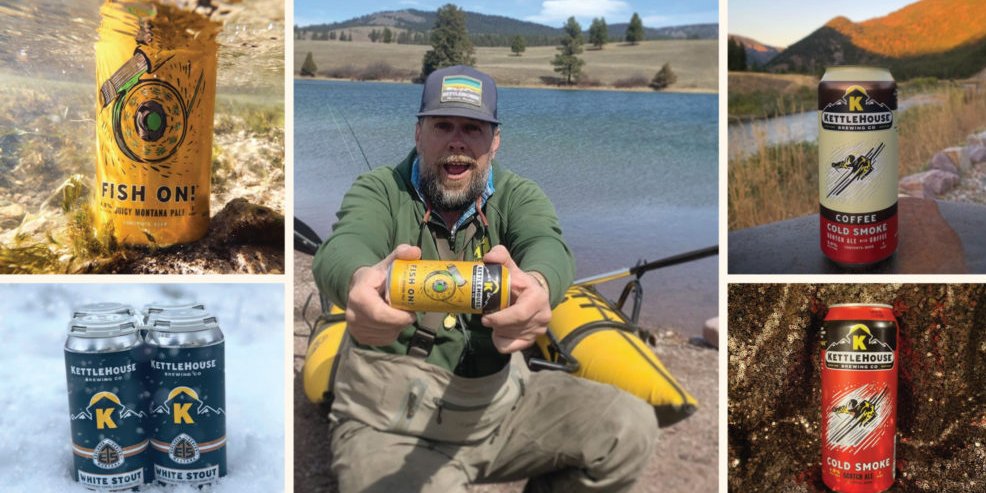
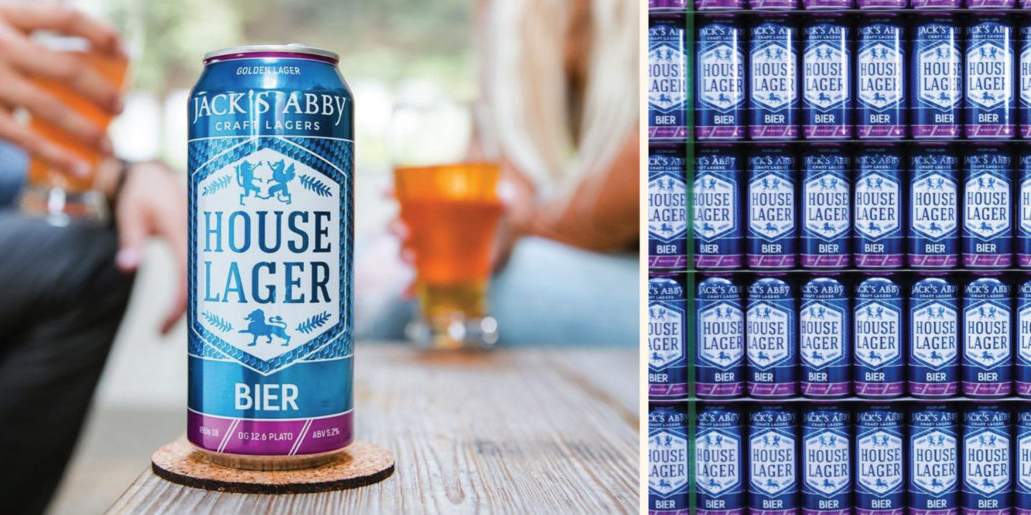
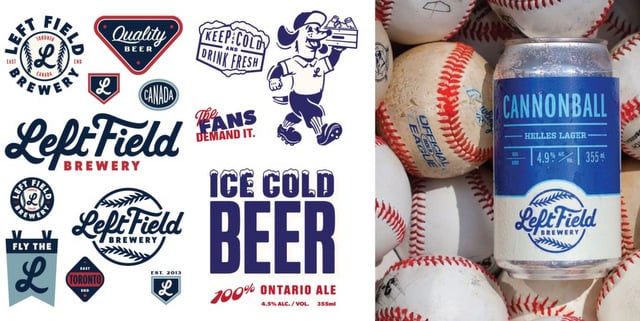

Leave a Reply
You must be logged in to post a comment.